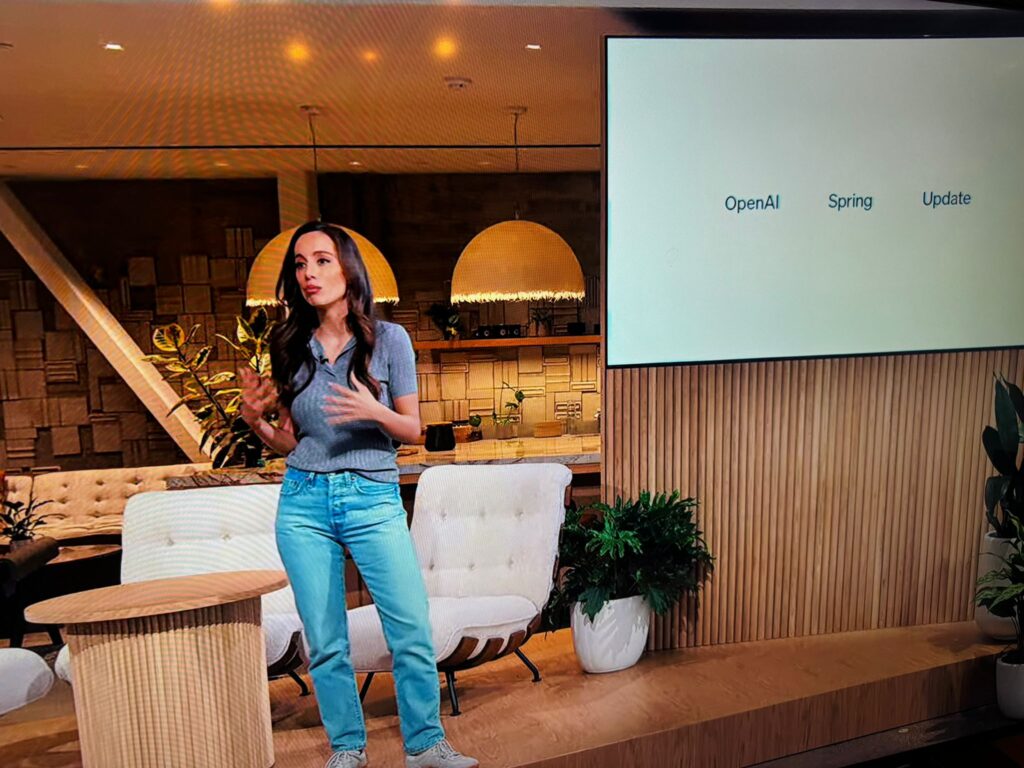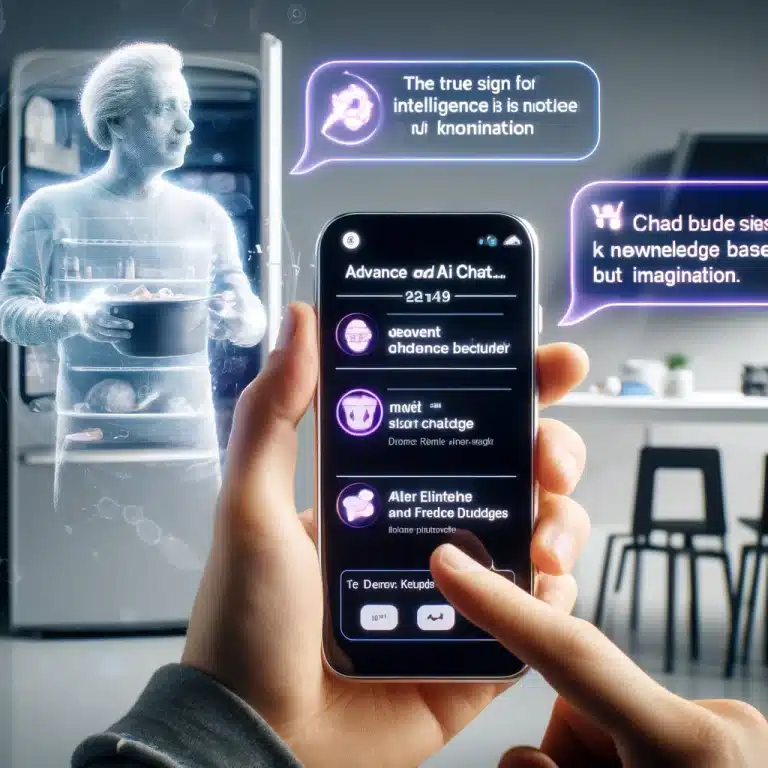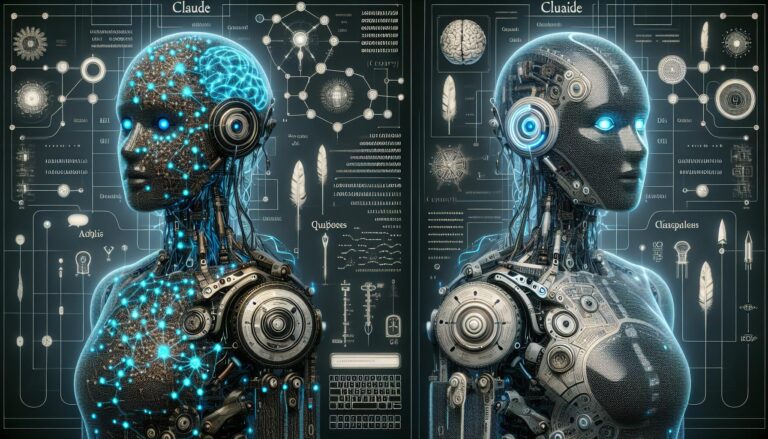OpenAI Releases GPT-4O

OpenAI has released something significant in its Spring Update; here are all the specifics. The newest model they released is called GPT-4O from GPT 4 Omnimodal.
You can view the release of GPT-4O live on YouTube:
https://youtu.be/DQacCB9tDaw
OpenAI’s latest model, GPT-4O, is turning heads with its enhanced capabilities and the promise of a more natural user interaction experience. This iteration marks a significant advancement from its predecessors, integrating text, vision, and audio to create a more immersive AI experience.
Mira Murati, OpenAI’s CTO, emphasizes GPT-4O’s ability to operate seamlessly across different modes of communication, making it adept at understanding and generating human-like responses regardless of the input method. This multi-modal ability is not just a technical enhancement but aims to make AI interactions feel more like talking to a human being, reducing the “latency” that has previously detracted from the user experience.
OpenAI’s commitment to accessibility is also notable. Unlike previous models that were often kept behind a paywall, GPT-4O has been released to both free and paid users, with paid users enjoying enhanced capacity. This approach democratizes access to cutting-edge AI technology, allowing a broader base of users to explore its potential.
The development of OpenAI ChatGPT model GPT-4O

Furthermore, the model’s underpinnings are robust and characterized by significant improvements in safety and alignment protocols developed through OpenAI’s iterative processes. These include advanced techniques to reduce the model’s propensity to generate harmful or misleading content, a critical concern as AI systems grow in capability and reach.
Additionally, introducing a ChatGPT desktop app and a refreshed user interface reflects OpenAI’s strategy to streamline user interactions and embed AI into everyday computing environments more effectively. This move could potentially change how users engage with AI, making it an integral, seamless part of their digital experiences.
“GPT-4o is our new state-of-the-art frontier model. We’ve been testing a version on the LMSys arena as im-also-a-good-gpt2-chatbot” – William Fedus. Hello GPT-4O. Check out our Chat AI.
The model’s development was informed by extensive safety and security evaluations, which involved collaborations with experts across various domains to identify and mitigate potential risks. This comprehensive approach ensures that GPT-4O advances in intelligence and aligns with broader societal values and safety standards.
As the landscape of generative AI continues to evolve, GPT-4O stands out as a beacon of what the future holds, promising faster, more intuitive, and safer AI tools. The release of GPT-4O is a testament to OpenAI’s ongoing commitment to innovation and its vision for a future where AI and humans collaborate more seamlessly. The tech community and potential users will undoubtedly watch closely as this technology develops and makes its mark across various applications.
As this technology is fresh off the press and still rolling out, we expect to see more detailed reports and user feedback in the coming weeks, further illuminating the capabilities and impact of GPT-4O.
Expanding the Frontiers of Generative AI with GPT-4O Omnimodal
OpenAI’s GPT-4O broadens the scope of AI’s capabilities and sets a new standard for developing and deploying these systems. The model is the product of an extensive and refined training regime that includes reinforcement learning from human feedback and novel training datasets designed to enhance performance and safety. These training methodologies are integral to GPT-4O’s ability to offer nuanced, context-aware responses that are significantly less prone to generating biased or unsafe content.
The introduction of GPT-4O also reflects a strategic shift in OpenAI’s approach to model accessibility. By offering the model to free and paid users, OpenAI fosters an inclusive environment where developers, researchers, and hobbyists can experiment with and build upon the most advanced AI tools available. This accessibility will likely spur a wave of innovation in AI applications across industries, from education to customer service, enhancing how these sectors leverage AI for improved outcomes.
Enhancing User Experience Through Technology GPT-4O
Alongside GPT-4O, OpenAI has introduced a suite of user-centric upgrades, including a desktop application for ChatGPT and improvements in multimodal interactions that streamline how users engage with AI. The desktop app, in particular, is designed to provide users with a more robust and flexible platform for interacting with GPT models, supporting offline capabilities and a more responsive user interface. This enhancement addresses common feedback regarding the accessibility and usability of AI tools, making advanced AI more approachable for everyday tasks.
Moreover, the refinements in multimodal capabilities mean that GPT-4O can handle a wider array of tasks more efficiently. The model offers a more integrated approach to AI-powered applications, whether it’s processing spoken commands, interpreting visual data, or managing text-based interactions. These improvements are crucial for businesses and end-users who demand more sophisticated yet easily navigable digital tools to support their daily operations and personal tasks.
These advancements underline OpenAI’s commitment to making AI more accessible, intuitive, and safe for a global audience. As we continue to explore the full range of GPT-4O’s capabilities and implications for various sectors, it becomes clear that this model is not just an update but a substantial leap forward in the journey toward truly intelligent and responsive AI systems.
Developing…

















